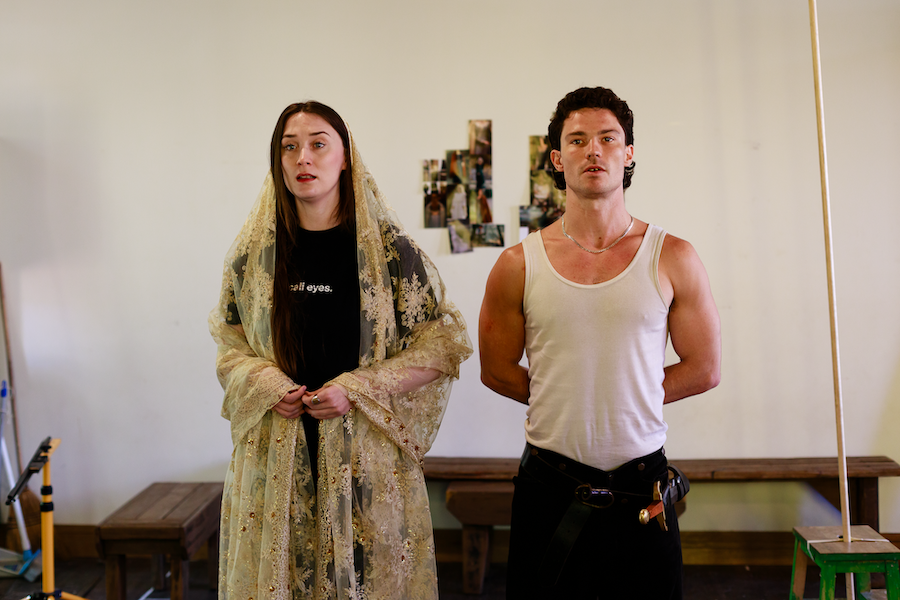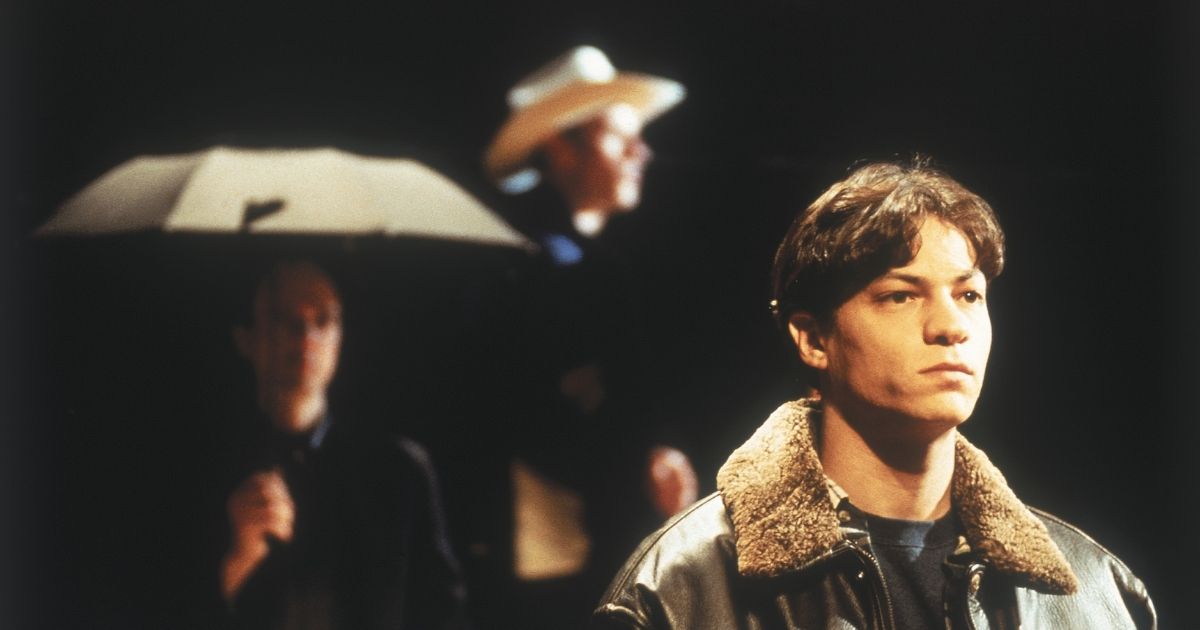
The Glitta Supernova Experience presents Body Map
Review by Barbarella Karpinski.
Surrealism meets Situationism in a show where the Playboy Bunny bounces back and offers a unique perspective on a red light monoculture that foregrounded the chic cult of Modern Primitivism and Monsterism.
Glitta Supernova, of Gurlesque infamy, (1998- 2011), gets her gear off early in the show, with all the abandon of getting free of your sticky clothes after a long day at the office during a heatwave. With a Northern Rivers hippie mother who never wore more than her batik sarong, Glitta seems most comfortable naked. Most of the show is performed nude with a few costume changes into Avon lady and playboy trash sartorially elegantly wasted.
All the bells and whistles of “tease” and “please” girl-to-girl striptease have gone from her performance, now she has matured from strip to theatre and is forty-plus, fit and fabulous. Supernova offers more to her audiences than the Gurlesque shows in their zeitgeist, where lesbians and non-binary queers could voyeuristically absorb the exhibitionism, because the night belonged to us. That Sapphic sub-culture in itself was born out of sex industry reclamations of feminism, Wicked Women (1990-1994) and Club Bent (1995-1996).
I remember dancing at Club Eros of an afternoon to suits in 1989, while other divas of the era, twirled, whirled and sashayed. Supernova like myself, danced for both the mainstream male culture and the queer consumers. There were similarities and differences and being perceived as public property in both the mainstream and in queer culture, has both a positive and a flipside. Supernova has spoken about how perceptions about her work limited her options for theatrical release.
With Supernova, the tease and titillation of standard striptease is absent but for historical allusions to Supernova’s backstory in burlesque, gurlesque and striptease. Even nakedness has a story in this body map and that is inherent in the title. There are stories of tattoos, scars, pubic hair waxing and labia injuries. The latter was not due to performing sex, but an accident in the lounge room when a piercing got caught on a lamp and is not a story for the feint hearted. It is however a great tale about where sub-culture and mainstream culture meet, as Glitta recounts sitting in Modern Primitive pose in a hospital waiting room holding a labia piercing and a piece of her own flesh. Visceral, real, bloody.
The story of Glitta’s body is both intimate and universal. It is also situated in time as a member of Generation X coming of age in the noughties, rejecting baby boomer feminism with its rules and radicalism while absorbing the sex industry sub-culture for its anarchic opportunities to guarantee that your youth will not be wasted on a 9-5 treadmill when you can strip in the night and have your days free to create. Rebellion is about ownership of your assets, whether they be sass and ass or real estate.
Supernova speaks about feeling like she paved the way for Lady Gaga and other New Millennium Monsters. Being pierced with coloured hair and queer to boot wasn’t always fashionable and Glitta speaks about being the target of violence in the naughties for her trademark decadent demeanour. Whether this is homophobic/artist phobic or “whorephobic”; bright hair, body tattoos, a penchant for nudity and performance art, has not always been a safe way to live your life.
In contemporary Newtown, Soho and on Paris catwalks, cerise hair with pale pink and mauve strands is de rigeur, but in inner city Sydney, in the late eighties, there wasn’t even a label for it, and the term “modern primitive” came later. It has always been dangerous to blend sex and art and Supernova and her friends got beaten up for being ahead of their time. In listening to Glitta, I remember Madonna speaking recently about getting raped on the rooftops of Manhattan before going on to become a superstar, now reviled for being sexual, old (58), a mother, Madonna and whore in one. Glitta’s generation X owes an influence to the pavement broken by such Sex-driven divas.
The 1989 RE/Search books produced Modern Primitives and was one of the first references to the concept of modern primitivism. The first issues of Re/Search (1980) had articles on The Slits, a feminist early punk band celebrating sexuality as well as Situationism, a Paris based philosophy centred on the avante garde with anarchic roots and revolutionary aspirations.
Glitta’s Body Map alludes to all these influences, a product of her time and place, before Lady Gaga and after punk, and even though she has claims of foregrounding Gaga and the fashion culture of Monsterism, her own X Generation liberties can be traced back to her antecedents – the Germ Free Adolescence of X Ray Specs, the bisexual musings of Patti Smith and the personal is political musings of the French situationists who sparked the 68 uprising.
Despite some absence of insight into cultural antecedents, Supernova’s show exuded both vulnerability and subterranean glamarama. The images on stage were both beautiful and redolent of the sub-culture she has both co-created and inherited from early punk and the brilliant baby boomers not content with just foregrounding liberty for all genders for future generations. The past has created polyphonic music, some of which is a background to Supernova’s colour and movement spectacle.
Her insights into the way the body is mapped in mainstream culture and women are regarded as a collection of “saggy tits”, “big asses” or the possessions of their employers, agents, the public, is familiar news, but her perspective is new, as this way of objectifying the world, is now not just part of the mainstream, but has made its way into GLBTIQ culture.
I can remember performing in Wicked Women, in the early nineties and the front row of butch fans, were yelling “show us your tits”. Supernova’s greatest blessing is her own experience of a number of sub-cultures ranging from counter-culture to rainbow and the opportunities for reflection, that she offers. Whether they be the Kardashian sisters, cat walk models or queer pole dancers, Glitta’s show has many universals and gives us a peep show view into the flip-side of being infamous. It’s about capitalism and ownership, and whether you are the late and great Amy Winehouse, your talent is owned by record companies or managers, and the greatest freedom one can have is artistic freedom. Body Map shows us the Greed, Power, Controlling culture and the damage it brings.
With an ebullient tone and the lack of self-consciousness, this show felt like a web cam beaming from a bedroom, casually shared with the theatre audience. Her last show, Let’s Get Metaphysical, was nominated for several awards across Australia and New Zealand in 2016 including “Best Cabaret” and “Most Outstanding Performer”. After Sydney, her next stop for this authentic journey is Aotearoa.
The Giant Dwarf Theatre. Feb 24, 2007.









